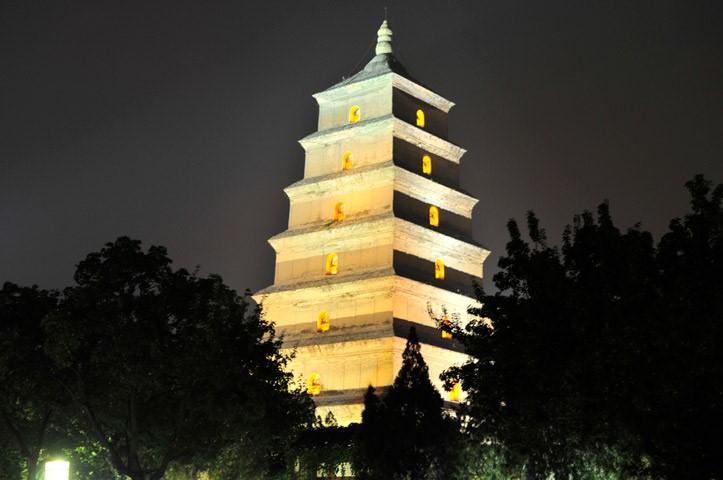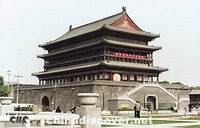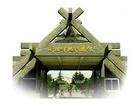Confucius -Life of Confucius - Confucius Temple

Confucius Temple
The Confucius temple was specially built for offering sacrifices to Confucius. The temple also serves as the Hancheng Museum where thousands of cultural relics are stored. Situated on Dongxue Lane in Hancheng City, it is the third largest Confucius Temple in China. Confucius (551-479BC) was a great thinker, educator and political figure in ancient China.
The temple's name changed with Confucius' honorary names again and again, which has been called Wen Miao, Xianshi Miao, Fuzi Miao and was finally named Confucius Temple in the Ming and Qing Periods. Confucius Temple is a set of architecture groups of the Yuan Dynasty (1271-1368) that are preserved intact. At present, there are 22 main and complementary buildings, altogether 78 rooms, and is the largest and best preserved ancient architecture in western area of China.
The Confucius Temple with four tightly connected courtyards. Lingxing Gate is the portal of the temple. Passing through the portal, one will enter the first courtyard where you will see masses of flowers and shady trees. In the eastern and western part of the courtyard, the Clothes Changing Pavilion (Gengyi Ting) and Fasting Room stand symmetrically, and the three rooms to the north are situated by the Vouge Gate (Ji Men), which leads to the second courtyard. Further north lies the Dacheng Palace, the main building of the temple, in which sacrifices were performed on the memorial tablet of Confucius. Passing through the doorway of the angle will lead to the third courtyard, the place in which Confucius gave lessons of disabusing. The fourth courtyard lies across Minglun Hall, as well as the Zunjing Pavilion, which is used to store volumes of sermons.
Life of Confucius
 Confucius was born in 551B.C in the State of Lu which is known today as Qufu in Shandong Province. His surname is Confucius, and his given name is Qiu. According to the famous records of the Grand Historian (Shi Ji) by the Western Han Dynasty (206BC-8AD) court historian, Sima Qian, Confucius' ancestors were members of the State of Song during the Spring and Autumn Period (770-476BC). His great grandfather, fleeing the turmoil in his native Song, had moved to the State of Lu, somewhere near the present town of Qufu in southeastern Shandong Province, where the family became impoverished. Sadly, his father died when he was very young but despite a hard life, he dedicated himself to study at the age of 15.
Confucius was born in 551B.C in the State of Lu which is known today as Qufu in Shandong Province. His surname is Confucius, and his given name is Qiu. According to the famous records of the Grand Historian (Shi Ji) by the Western Han Dynasty (206BC-8AD) court historian, Sima Qian, Confucius' ancestors were members of the State of Song during the Spring and Autumn Period (770-476BC). His great grandfather, fleeing the turmoil in his native Song, had moved to the State of Lu, somewhere near the present town of Qufu in southeastern Shandong Province, where the family became impoverished. Sadly, his father died when he was very young but despite a hard life, he dedicated himself to study at the age of 15.
Confucius endured a poverty-stricken and humiliating youth and had to undertake such petty jobs as accounting and caring for livestock. He studied ritual with the Daoist Master Lao Dan. In his middle age Confucius had about three thousand disciples whom he taught and also devoted himself to political matters in the Lu State.
When Confucius was fifty years old, his talents were recognized when Duke Ding of Lu was on the throne, he was appointed Minister of Public Works and then Minister of Crime. But Confucius apparently offended members of the Lu nobles and was subsequently forced to leave office and go into exile. He left Lu and traveled in the states of Wei, Song, Chen, Cai, and Chu, purportedly looking for a ruler who might employ him but meeting instead with indifference and, occasionally, severe hardship and danger.
In 484 BC, he returned to Lu and spent the remainder of his life teaching, putting in order the Book of Songs, the Book of Documents, and other ancient classics, as well as editing the Spring and Autumn Annals, the court chronicle of Lu.
Confucius proposed a complete set of principles concerning study , he said "studying without thinking leads to confusion; thinking without studying leads to laziness." His teachings, preserved in the Analects , form the foundation of much of subsequent Chinese speculation on education. He







